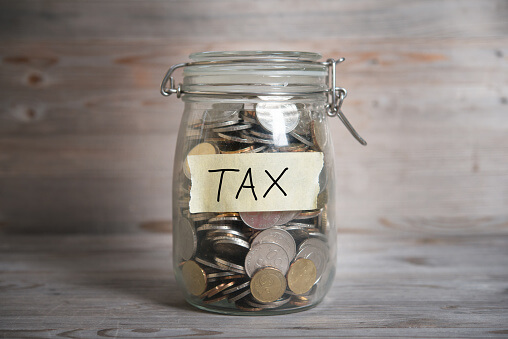
In this blog post you will learn:
- What’s TD1 form?
- Is every holidaymaker eligible for tax credits in Canada?
- Why does everyone working in Canada need it?
- Should a TD1 form be completed yearly?
- How to fill out TD1 online? What’s the easiest way to generate and fill it out?
- How to file your Canadian tax return and claim your tax refund online
- Key Canadian Tax Dates
- And more…
Look, we get it. When planning an interesting working holiday trip, no one wants to think about taxes.
After all, the only thing that people complain more about than taxes is probably the weather.
However, if you’re employed in Canada, you’ll need to be familiar with a few key tax documents. One of the most important forms you need to know about is the TD1 form.
Before the start of your employment, you have to complete the federal TD1 Form and provide it to your employer.
By filling out this form correctly you may be able to significantly reduce your Canadian tax bill by availing of personal tax credits.
In this guide, we will explain what TD1 is, what’s the easiest way to generate and fill out your TD1 in a safe online environment, and also how to file a tax return in Canada and claim a tax refund.
Read Also:
Important Documents & Forms For Canadian Working Holiday Makers
What is a TD1 form?
Simply put, the purpose of the TD1 form is to collect the correct amount of tax from each working person, and it is one of the most crucial tax forms for people starting a new job in Canada.
There are two types of TD1 forms: federal and provincial/territorial.
When you start working, you must fill out and submit them to Human Resources/Payroll.
With this form, employees provide the government with the information it requires on salary and relevant tax credits.
By correctly completing it, you may be able to lower your Canadian tax bill significantly by claiming personal tax credits.
The tax amount can be higher or lower depending on which tax credits are applicable. If a person does not qualify for any tax credits, the amount of tax deducted monthly from their pay will be determined by the marginal tax rate on their salary.
The CRA may collect too much tax during the year, and refund any excess because the monthly deductions are estimations. The Canadian tax authority will repay the appropriate amount after assessing a filed tax return.
Which type of TD1 form do I need?
Every working holidaymaker employed in Canada must fill out the federal TD1 tax form. Employees and pensioners who claim more than just the basic exemption need to fill out the relevant TD1 form for the province in which they work.
For example, if you are working in British Columbia and you are eligible for certain tax exemptions such as disability or education reliefs, you must fill out a TD1BC form along with the TD1 form.
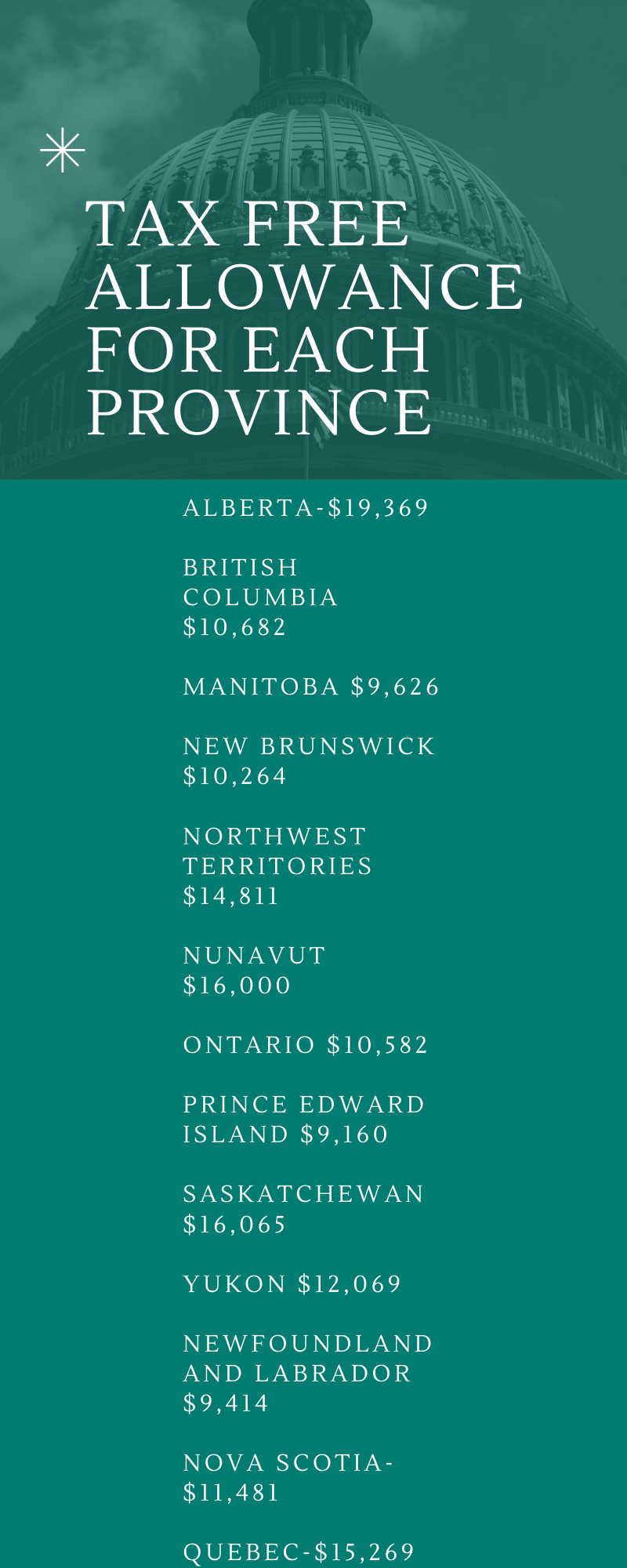
What is a TD1 used for?
To determine if you are eligible for tax credits in Canada.
What are tax credits?
Tax credits are amounts that reduce the tax you pay on your taxable income. The more tax credits that apply to you, the more you can reduce your income tax.
If you are eligible for tax credits you can earn up to the tax-free allowance amount (approx. 11, 000 CAD) tax-free. You only start paying tax after you surpass this figure.
You May Also Like:
What Is A T4 Form?
Is every holidaymaker eligible for tax credits in Canada?
In a nutshell, you can claim credits for a tax year if at least 90% of your income for that year was earned from Canadian sources.
However, if you earned more than 10% of your income from sources outside of Canada during a tax year, you are not eligible for the personal tax credits.
If so, you did not meet the “90% rule” for this particular year and in this case, you should enter 0 in box 13 of the TD1 form and select “No” on the non-resident question on the 2nd page of the form.
If you do not claim the tax credits correctly on the TD1 form you may end up paying a higher rate of tax.
If you claim credits that you are not eligible to claim, the employer will underpay your tax and you could be left with a large amount of tax being owed to the tax authorities.
If you are eligible to claim tax credits (you earned 90% or more of your income in Canada that year), but you do not claim it on the TD1 form, your employer might tax you at a higher rate. On the plus side, you will be due this overpaid tax back when you file your taxes the following year.
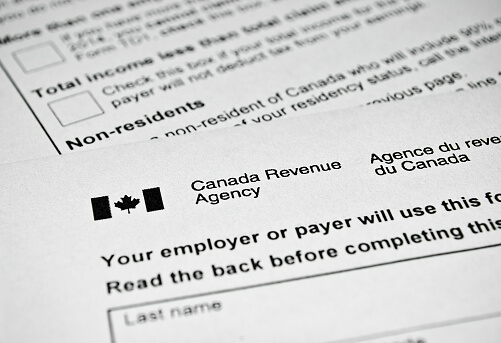
When do I need to fill out a TD1? Who should fill out a TD1?
You should fill out the form if:
- you start a new job in Canada
- you begin to receive pension payouts
- your income situation has changed dramatically and you need to update the form
- you want to increase how much tax is deducted at the source
- you want to claim a deduction because of living in a prescribed zone
What if I work two or more jobs simultaneously in Canada?
If you work more than one job, then you will need to fill out a TD1 form for each job. It’s important to know that you cannot claim personal tax credits twice.
If you have more than one employer you have to check the box in the “More than one employer or payer at the same time” section on the 2nd page of the form and enter “0” on line 13 on the 1st page. It’s best to claim the credits for the job that pays best.
What happens if I don’t fill out a TD1 form or if my employer does not provide me with one?
Your employer may assume you are eligible for tax credits when you are not, therefore you pay less tax than you are supposed to. If that’s the case you will be left owing to the CRA (Canada Revenue Agency) an amount of money when filing taxes.
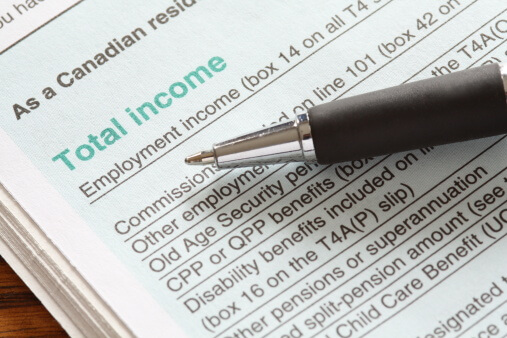
What happens if I claim tax credits when I’m not eligible?
If you wrongfully claim tax credits on your TD1 form you will pay tax at a lower rate. However, there is a strong chance you will be audited by the CRA and end up having a large tax bill to pay.
This may affect you later down the road when looking for permanent residency. It is imperative you keep a clear record with the tax authorities.
Should a TD1 form be completed yearly?
No, you don’t need to do this. You only need to complete a new form when your situation changes, and you will have up to 7 days to submit a new form to your employer.
As mentioned above, you need to complete this form when starting a new job in Canada.
You are not required to complete a new TD1 form every year unless your tax credit amounts have changed.
Completing a TD1
Every new employee usually should complete both the provincial TD1 and the federal one. They are included in the onboarding documents.
In Quebec, employers should use the federal TD1 and the provincial one which only there is called Form TP1015.3-V, Source Deductions Return.
To complete them, employees must follow the instructions on each line of both the federal and provincial forms.
It is essential that you fill out the form carefully, especially if:
-
You worked in another country in the same tax year
If you received income from outside Canada in the same year, you may not be eligible to claim the tax credits that allow you to generate tax-free income in Canada.
The 90% rule is a method that can help you determine whether or not you are eligible for tax benefits.
Simply put, you are ineligible to claim tax credits if you did not earn 90% of your income in Canada during the tax year.
When you’re filling out your TD1 form, keep this guideline in mind. If you did not earn 90% of your income in Canada for the year, enter 0 in box 13 and check “No” on the non-resident question on the form.
If you file your TD1 form incorrectly, you may owe the Canadian tax authorities more money when you file your annual Income Tax Return. If you’re unsure about the rule, it’s best not to claim the credits.
-
You worked two or more jobs in Canada simultaneously.
For each job you work in Canada, you must complete a TD1 form. It’s worth noting that you can only claim tax credits from one job at a time. In general, it’s better to claim the credits from the best-paid job.
What is the easiest way to fill out my TD1? How to fill out TD1 online?
The simplest way to fill out your TD1 is with Sprintax TDS Canada (Tax Determination Software).
Why?
First of all, after you create your account, the software will generate the applicable forms (TD1 and TP-1015.3-V for Quebec) and will determine if you are eligible for any deductions, credits, or tax treaties so that you don’t have to figure this out on your own.
It will also help you figure out your residency status for tax purposes.
All of this will save you a lot of time and stress.
Also, it is a cloud-based product and you don’t need to install anything on your device.
Simply create your Sprintax TDS Canada account to get started.
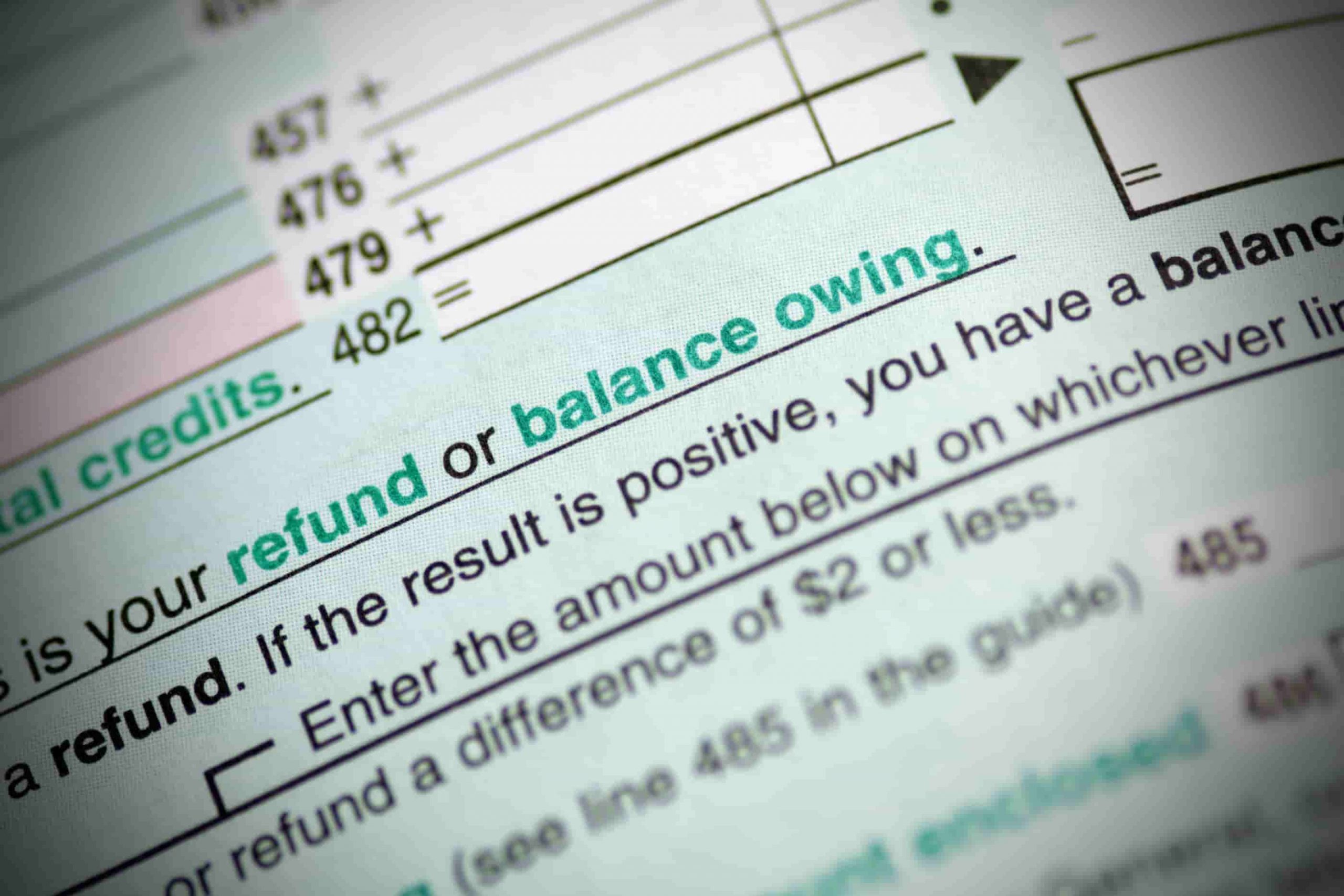
Who can claim a tax refund in Canada?
Everyone who overpays tax!
Each year, most working holidaymakers overpay tax in Canada without even realizing it and then forget to claim their tax refund. Don’t be one of them!
You may be due a Canadian tax rebate if:
- You overpay income tax
- You overpay the Canadian Pension Plan
- You overpay Employer Insurance
More good news is that you may be able to increase your tax refund and minimize your tax bill if you claim for certain deductions and expenses!
It is very important to keep your receipts and payment documents for these expenses safe, so you have proof when it comes to filing your Canadian tax return. Check out how long you should be keeping them in our detailed article.
The average tax refund in Canada is around $998.

How can I file a tax return and claim a tax refund in Canada?
The only way to get your money back is to file a Canadian tax return.
The great news is that after creating your account in Sprintax TDS, you can transfer your data to Sprintax Tax Preparation which will help you file your tax return and claim your tax refund electronically.
The product will guide you through the entire process from start to finish and guarantee your compliance with the CRA.
Sprintax Canada software supports tax filing for the 2019 and 2020 tax years.
If you would like to file for an earlier tax year, it will prompt you to register with their partner Taxback.com.

Which are the key Canadian tax dates to be aware of?
You need to remember that filing a tax return is part of your responsibilities as a taxpayer in Canada.
The Canadian tax year runs from 1 January to 31 December and the Canadian tax return deadline is 30 April.
If you are self-employed in Canada, or your common-law partner or a spouse carried out any business in Canada, the deadline for filing your tax return is 15 June.
You should receive your T4 form from your employer by the end of February and it’s important to keep it safe because you will need it when filing your tax return.
For more information on all of the important Canadian tax dates, check out our blog post.
Why choose Sprintax Canada?
Sprintax Canada prepares over 120,000 non-resident and emigrant tax returns every year!
If you’re a non-resident student or employee in Canada, then Sprintax Canada is designed for you!
Sprintax Canada can help with:
- determination of your residency status for tax purposes
- preparation of your federal and provincial TD1 form
- determination of applicable tax treaties, deductions, and credits depending on your circumstances
- preparing your Canadian tax return and claiming your maximum legal tax refund (including Quebec income tax return)
- tax withholding calculation
- ITN application
- 100% compliance with CRA
- step-by-step- guide to claiming relevant expenses




